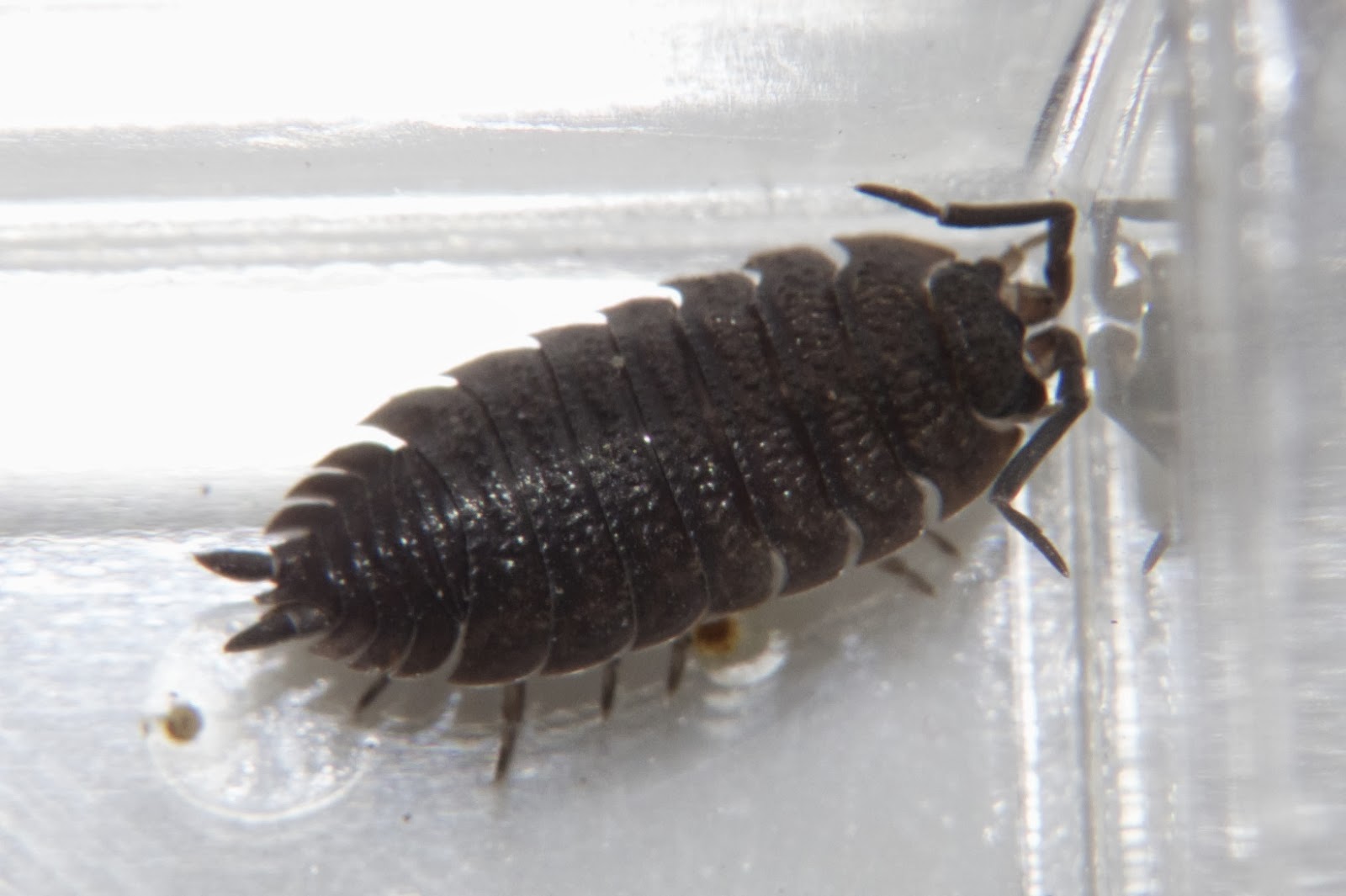Porcellio scaber - Common Rough Woodlouse
Found this little chappie wondering around the floor of the downstairs toilet the other day. A little bit of detective work on the web and using the few books insect reference books that detail woodlice, I was able to make a tentative identification and name him a common rough woodlouse. That is not demeaning him in anyway, but that's his common name. He also goes by the much more impressive name of Porcellio scaber.
Common rough woodlice are considered native to mainland Europe, but has spread throughout the world, including onto isolated islands such as Hawaii and Marion Island (located between Africa and Antarctica) and is found on every continent, excluding Antarctica. This spread has probably been aided by export of plant material.
Part their success could be due to the wide range of habitats they live in. They live under leaf litter, rocks, and fallen logs in forests, meadows, and gardens, and are frequently found in splash zones, dunes and salt marshes.
The allusion to the body surface in the common name can clearly be seen in the photographs. It has a warty body surface with two short tails (uropodia) on their final body segments (nelsons).
Woodlice lack a waxy cuticle on their exoskeleton, leaving them more at risk of desiccation (drying out due to excess water loss) than other members of the arthropoda such as insects and spiders. As a result of this, much of their behaviour is concerned with avoiding desiccation, seeking damp areas out of light.
They have seven body segements, each with a pair of legs, and their bodies are divided into three sections: head, pereion (thorax), and pleon (abdomen), and their heads are divided into three lobes.
Their two pleopodia (appendages under their pleons), have pseudotrachia, allowing for respiration through their pseudolungs. These pseudolungs appear as white patches on the abdomen, and they are unable to be closed to prevent water loss.
One thing that did surprise me was how long the life span of P. Scaber can be. It has been suggested that this species typically lives 2-3 years, though up to 90% die within a month of emerging from their brooding pouches.
References:
Woodlice Online. http://www.porcellio.scaber.org/woodlice/expback.htm
Reggio, C. Porcellion Scaber. Animal Diversity Web. http://animaldiversity.ummz.umich.edu/accounts/Porcellio_scaber/





Comments
Post a Comment